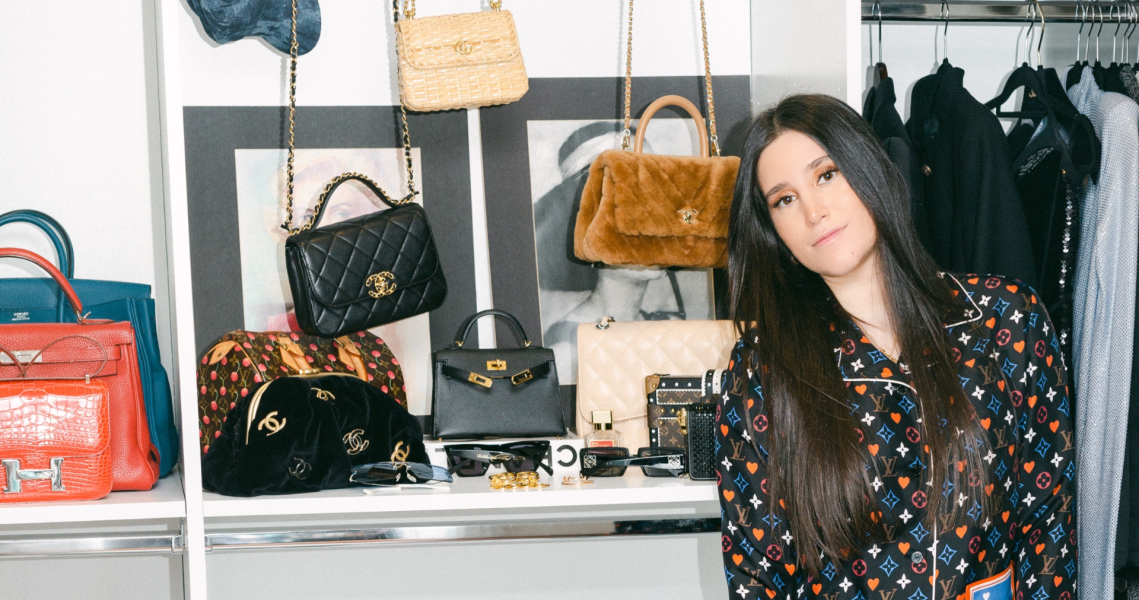Personal shopper Jennifer Nisan began sourcing items for a small client base in NYC a year before the pandemic. The idea stemmed from her habit of posting on Instagram images of the luxury items and runway looks she wanted. Two and a half years later, she has a global client base, with 40% in the U.S., 20% in the U.K., and others in Dubai, Qatar and Israel.
Originally working toward a career in fashion editorial, Nisan’s luxury fashion sourcing business — through on the Instagram account Front Row Live (35,000 followers) — blew up, driving her to change course. She now regularly source items requested via DMs for influencers and celebrities, including Shay Mitchell, “Succession” actress Annabelle Dexter-Jones and designer Mary Katrantzou, who found her account through word of mouth.
Personal shopping has become more competitive in recent years, with the rise of dedicated companies like California-based tech service Editorialist and U.K.-based app Sourcewhere. Nisan claims her differentiator is that she partners with retailers including Net-a-Porter, MyTheresa, Selfridges and Harrods, as well as brands like Dolce & Gabbana, to source items before they have even hit shelves. Nisan has partnership deals with retailers and also takes a small sourcing fee from consumers for her finds.
Here, Nisan talks about what exclusivity changes brands have made in the last year, how personal shopping has changed as a category and what personal shoppers do at fashion week.
How has personal shopping changed in the last year?
“You cannot walk into a store and say that you would like to buy the latest Chanel bathing suit. It’s not on the floor. This craze that luxury brands have created for their products is something that has changed significantly in the last year. Brands are also still limiting customer numbers in stores, which means getting access can be more difficult. It used to be much easier to get access, even for personal shoppers like us. Brands are now telling us they can’t give us as much access to products, as they are building up their stock for their own loyal client lists. So for shoppers, it’s not as easy as it looks. Yes, we have great relationships, but that doesn’t mean we get to just come into stores, take everything and put it in a box.”
How does fashion month play into your job?
“Fashion week is going to be completely chaotic. The way my partnerships with my [brand] clients work is that, if I’m going to a show, some of them have already notified me that I need to bring a [customer] client. Part of my job involves entertaining clients for the duration of New York Fashion Week. But the most important aspect of it is that it’s an opportunity for clients to see what’s coming next season and put in their pre-orders with me. After the shows, I come home, review the photos and zoom in on the accessories. I rewatch the shows and I make a mental note to let specific brands know what my clients are going to bite at.”
Has it become harder to source products?
“As much as I don’t want to say it, hype is something that has taken over society this year — whether it’s a celebrity collaboration, a limited collection or an exclusive client experience. The luxury market has become something that is just not accessible for the average person. The industry has strategized it to make it feel like you have to know somebody to get something, or that an item is very limited. Even Chanel doesn’t let you buy more than one handbag a month now. That’s the rule.”
What are the most popular products right now for your clients?
“I’ve noticed that my Middle Eastern clients love [footwear designer] Amina Muaddi. They will take anything from her. They love Hermès. In the U.S., we do really well with Gucci. Prada is also crazy popular between the U.K. and the U.S.”
Why do you think you’ve been successful?
“There are two important [aspects to this] industry – building relationships with brands and clients and staying dedicated. I’ve built extremely close relationships over time, treating every store director and associate that I work with respect. The truth of the matter is that, because of our relationship with brands, I’m able to pull [products] from places that people don’t even know exist.”




